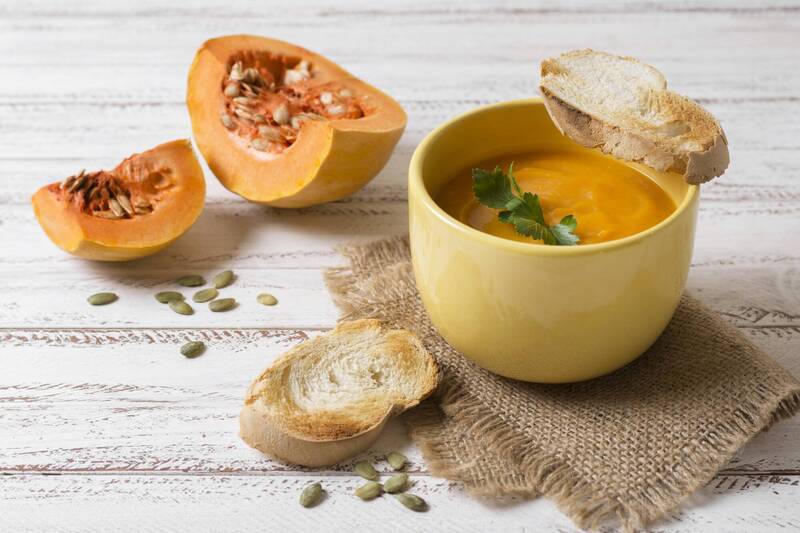According to the National Health Administration, pumpkin is rich in vitamin A, folic acid, protein, and dietary fiber. Among them, vitamin A can not only protect the eyes and skin, but also is an important antioxidant nutrient.
(Picture taken from freepik)
[Health Channel/Comprehensive Report] Pumpkin has a sweet taste and is very popular as a hot pot ingredient or in dishes. In this regard, the National Health Administration stated that pumpkin is rich in vitamin A, folic acid, protein, and dietary fiber, among which Vitamin A not only protects the eyes and skin, but is also an important antioxidant nutrient.
However, because pumpkin belongs to whole grains, it is necessary to moderately reduce the amount of rice and pasta when serving as a side dish.
The National Health Administration posted on the Facebook fan page "Eat is good for health", pointing out that pumpkins are native to Mexico and Guatemala, also known as gourds and pumpkins.
It can be divided into two major varieties: Chinese pumpkin and Western pumpkin. Both are grown in Taiwan, but Chinese pumpkin is the main one.
Among them, Chinese pumpkin has a thicker flesh and is suitable for dishes with complete pulp, such as fried rice noodles or pumpkin porridge, while Western pumpkin has a thin flesh and is more suitable for cooking soups, pumpkin pie and desserts.
Please read on...
According to the National Health Administration, pumpkin is rich in vitamin A and potassium ions. Vitamin A can not only protect the eyes and skin, but also is an important antioxidant nutrient.
Per 100g of pumpkin, there are 74 calories, 17.3g of carbohydrates, 1.9g of protein, 2.5g of dietary fiber, vitamin AI.U., 59.5mg of folic acid, 426mg of potassium, and 17mg of magnesium.
In addition, pumpkin belongs to whole grains, so when serving as a side dish, the amount of rice and pasta should be moderately reduced.
As for how to choose, the National Health Administration recommends that the appearance is correct and the fruit stalk is complete; heaviness, the deeper the edge, the more bulging the melon petals; the skin is dry and firm, with melon powder, and fingers will not leave traces; The drier the better; the yellower part of the tail, the better the ripeness.
The Taiwan Cancer Foundation also said that the rare elements contained in pumpkin can promote the secretion of insulin in the body and strengthen the metabolism of glucose. Fiber can help the excess sugar in the intestines to be excreted from the body, and eating pumpkin is easy to feel full, which is good for diabetic patients. Excellent.
In addition, the β-carotene in pumpkin not only prevents cancer, but also protects the heart and blood system, and enhances the health and resistance of mucous membranes and skin. However, if you eat too much pumpkin, vitamin A will be stored in the liver due to vitamin A. In addition, the bile is not easily excreted, making the skin look yellow; the cobalt contained in it is one of the important components of red blood cells, and zinc can maintain the maturity of red blood cells, so there is a folk saying "pumpkin nourishes blood".
☆Do not miss health news, follow the fan page by like.
☆For more important medical news, please visit the free health website.
keywords
pumpkin
Vitamin A
healthy diet
eye protection
nutritional value
Whole grains
related news
